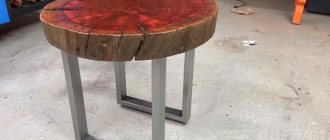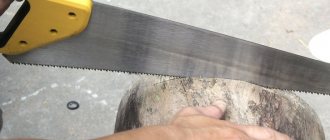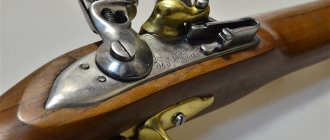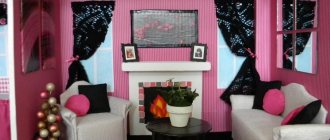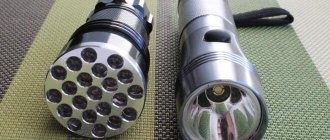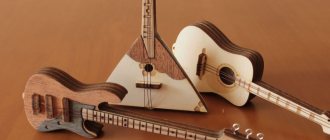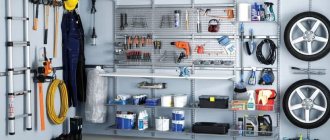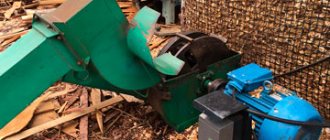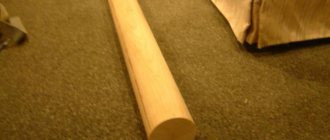Home House and cottage Do it yourself
In the modern world, many children are practically indifferent to toys. Electronic gadgets are of much greater interest now. Of course, every parent is concerned about this and tries to introduce their child to games with real objects.
One of the best ways to wean your child off from virtual worlds is to make a toy with him. A do-it-yourself machine will be an excellent toy with which you can have a lot of fun. And if you manage to save it, it will be an excellent souvenir “from childhood”, bringing with it a lot of pleasant memories.
There are several ways in which you can create an automaton. It all depends on how much time and effort you are willing to put into the craft. Another important factor is the availability of all the necessary tools. After all, not everyone has a whole carpentry kit in stock.
If the child for whom the product is intended is old enough, then you can further diversify the toy. Namely, add a shooting function.
The main thing to remember is that in order not to overshadow the process of creating a wooden machine, you should also not forget about basic safety rules. Protect your hands when working with cutting tools. Purchase a protective mask and respirator in advance for working on a grinding machine or with sandpaper.
There are a huge number of fun things you can play with your children. Undoubtedly, these are outdoor games. At the same time, an integral advantage of a wooden toy is its durability. The same cannot be said about plastic analogues.
How to make a simple machine from wood
To diversify your child's games, you can make a simple wooden machine. It won't take much time, but first you need to prepare everything you need.
Tools:
- Circular saw;
- Drill;
- Jigsaw;
- Sharpener 10 cm.
- Sandpaper;
To simplify your work, print out a drawing of the machine model. The drawing can be easily found on the Internet. Then follow the instructions below:
- Take a block of wood or a piece of thick board;
- Based on a drawing or photograph of a machine gun, carefully mark the boundaries of the future weapon on the tree with a marker;
If you print an image of a machine gun on paper, and then cut it out and use it as a stencil, the product will turn out to be very realistic. After all, all proportions will be maintained.
- Start cutting straight lines using a circular saw;
- Pay special attention to cutting out the curved parts of the machine. To do this you need to use a jigsaw;
- Use a sharpener to contour the weapon;
- To make the machine more interesting, do not forget to drill holes such as the barrel;
- Polish the resulting weapon using sandpaper by hand;
- Take a small piece of wire, preferably aluminum, to construct the trigger;
- At the end, paint the machine or varnish it;
This wooden toy machine is quite easy to make and will bring a lot of joy to the child.
What do the colors of the Russian flag mean? interpretation version
The meaning of the colors of the Russian flag can be deciphered in different ways. One can distinguish a variation of the tsarist period:
- White – free-thinking.
- Blue – trust.
- Scarlet is a power.
The second interpretation has a different meaning: the Tsar, God and Fatherland are one.
Russian flag with coat of arms
The third designation states that coloring shades in a certain order indicates unity: Faith + Hope + Love (blue + snow-white + scarlet).
People who like Slavic culture interpret the image as follows:
- The red stripe is the kingdom of the underground inhabitants.
- Blue shade - living people.
- White tone - celestial beings.
Considering the colors that the national state symbol has, it is worth noting that their combination is characterized by a mixture of dynamism with upward striving, from movement to spiritual impulses.
How to make a realistic Kalashnikov assault rifle
A realistic model of the machine can be made at home using available tools. So, here is a list of things you will need:
- Thick and wide board (thickness should be at least 4 cm);
- Wood handle (quite thin);
- Plywood sheet;
- PVA glue;
- Dye;
- Jigsaw;
- Milling machine;
- Sandpaper;
- Magnets;
- Marker;
First, choose the necessary material for work. It is better to choose a pine board.
When choosing wood for a product, please note that there should be no knots or splinters on it.
We make a sketch on the wood. Using a marker we outline the outline of the future Kalashnikov. It is worth considering that the magazine will be separately attached to the machine, so you need to draw it separately. When the image is ready, begin to carefully cut out the blank using a jigsaw.
Next, on a sheet of plywood, draw two sketches of the side parts of the machine. These parts will be needed to hide the magazine mounting location in the future. For this you should choose thin plywood.
In order for the magazine to be securely attached to the base of the weapon, you need to try it on and sharpen it several times. Nothing should get caught, only in this case the child will be comfortable while playing.
Use a milling machine to add volume to the product. To do this, it is necessary to chamfer the handle, as well as the butt. Subsequently, sand the workpieces as best as possible.
Take the prepared side parts, cut from plywood, and glue them to the main part of the machine, generously smearing them with glue. Particular attention should be paid to the contour of the workpiece. Then press all the parts for more reliable gluing, and leave for several hours until completely dry. As a result, it is worth sanding the product again so that the plywood parts do not stand out.
Start modeling the barrel of the future wooden machine gun. At this stage you will need a thin cutting (you can make it yourself or purchase it in the construction department of the store). You also need to cut out the front sight and drill holes in the machine gun in order to later fasten the barrel. Lubricate all parts with glue at the fastening points. After the machine is completely assembled, give it time to dry.
At the final stage, start painting the resulting machine model. You can use dark paint or varnish.
If you prefer paint, use water-based paint. It's safer.
To make the magazine more securely attached to the machine, it is necessary to use magnets. If the purchased magnets are in the shape of a tablet, then before gluing them, it is worth drilling small holes in the magazine and the inside of the machine. The diameter of the holes must match the diameter of the magnets. If you purchased a roll-type magnet, then glue a piece of the magnet of the desired shape and size to the inside of the machine. In this case, a metal plate must be glued to the magazine. It is better to choose quick-drying glue or superglue.
Now the wooden machine gun is ready. This weapon model is very interesting and realistic, which means it will undoubtedly be in demand among children.
Model features
Standard features include a removable magazine, a removable receiver cover, a removable bolt, a removable cleaning rod, and a moving sighting bar.
At the same time, we have an original scale, and a good external resemblance - at night you can rob the stalls. Well, I was joking by the way.
In a word, it's a pretty funny toy. True shooting enthusiasts will appreciate it. And for staged filming, you can arm entire crowds of people at low cost... dreams, dreams.
Children often ask their parents to make them some kind of toy from wood. The boys demand that weapons be made for them, with which they could continue endless backyard “wars.” The best option for a child would be a wooden dummy 47. How to make an AK-47 from wood? If you have the right tool, even a beginner can cope with this task. Information on how to make an AK-47 from wood with your own hands is presented in the article.
How to make a toy machine and wood
Before you start working on a future toy, carefully draw a sketch of the future machine and transfer it to the material from which the product will be made. In this case, each detail must be drawn separately.
Make sure that the entire set of tools necessary for the job is at your fingertips. For the initial finishing you will need: hammer, chisel, hatchet, plane, wood hacksaw, metal hacksaw, drill, level.
For harvesting, you should choose coniferous wood. And on the blank, leave at least 15% of the material as a reserve. This is required for subsequent adjustments to the shape of the product. All elements of the future machine are cut out separately.
After all the parts are cut out of the wood, you need to move on to the sanding stage. To achieve the desired result, use the following sequence. First, file each piece using files. Then use coarse sandpaper first and then fine sandpaper to bring the surface of the product to the required level of smoothness.
At the last stage, start decorating the future toy. To do this, coat the surface of the wood with varnish, preferably in two layers. Pre-prime the areas where the paint will be applied.
Let the toy machine dry. And you can start playing.
Disassembly, assembly and loading of the magazine
As part of fire training exercises, standards for unloading and loading a magazine may be included.
- Initial position: the soldier is at the table, in front of him is an empty magazine and 30 rounds of loose ammunition. After the instructor’s command to “Start loading the magazine,” the participant takes the magazine with his left hand with the hole up, placing it at an angle, inserts one cartridge after another, pressing with the thumb.
- After the “Ready” command, the stopwatch stops.
- The standard is considered to be passed perfectly if the soldier completed it in 33 seconds. 38 seconds is already the “good” mark, and 43 seconds is “satisfactory”.
- This is followed by the command “Unload store”. The time is not recorded, this is not a standard, but the instructor observes and records errors that can reduce the grade.
How to make a Schmeisser machine gun
You can make a machine gun from wood in different ways. It all depends on your skill and the materials you have at hand.
To make a machine model you will need:
- Wooden slats – 2 pcs.;
- Super glue;
- Nails;
- Espagnolette;
- Hacksaw;
- Sandpaper;
The boards or slats that will be used must be at least 50 centimeters long. We saw the first strip lengthwise in the middle, leaving only a third. While the lower part needs to be removed. We divide the second rail into two unequal segments. The longer part will be the magazine, and the short part will be the handle of the future machine gun.
The prepared parts of the product must be sanded using sandpaper. Then fasten all the parts together using glue.
Also, any weapon needs a front sight. Make it from a nail, carefully driving it into the upper part of the barrel. Make the trigger in a similar way. Attach a latch to the side of the machine as a bolt.
At the final stage, sand the future toy again with sandpaper. Then cover the entire machine with dark paint. And let the product dry.
Now you can enjoy playing this slot machine and win new victories.
Birth of a legend
In 1943, the MKb.42(H) assault rifle designed by Hugo Schmeisser fell into the hands of the Red Army. Its tests prompted the decision to develop in the USSR both an intermediate cartridge and weapons for it, but there was no talk of any borrowing of Schmeisser’s ideas. A year later, prototypes of AS-44 assault rifles by A. I. Sudaev, AT-44 by F. V. Tokarev, and 1944-model assault rifles by V. A. Degtyarev and many other designers were created. But Kalashnikov at this time, having behind him the development of a submachine gun and a light machine gun, by 1945 he was creating a self-loading carbine chambered for the same intermediate cartridge, but not yet a machine gun. This task was assigned to him at the GAU, because the designers did not work on certain types of weapons at their own whim.
In 1944, the Germans adopted the “Sturmgewehr” StG 44 of the same Hugo Schmeisser (Sturmgewehr translates as “assault rifle” - the term “machine gun” did not take root in Europe). In 1945, Schmeisser, along with his hometown of Suhl, fell into the hands of American troops. The Americans interrogated Hugo, examined his works, but showed no interest in the creative heritage of the eminent German and calmly gave him and the city after the war to the Soviet occupation zone. In 1946, the Soviet authorities gathered a group of designers of 16 people, which included Schmeisser, and took them to the closed weapons design bureau of the Izhevsk plant. At that time, Kalashnikov had already participated in the competition with his first model of the AK assault rifle, model 1946, obviously without German help. And then until 1948, the machine gun was refined in the city of Kovrov at the arms factory of V. A. Degtyarev - it was there that the famous AK model 1947 was born.
How to make a simple Schmeisser
It often happens that there is not enough time to create a complex machine model. But this is not a problem, because a simple Schmeiser can be made from scrap materials. You will need:
- Chisel;
- Nails;
- A pair of wide slats;
Divide one of the slats into two parts. It is desirable that one of the halves is longer than the other.
On the second rail, cut out several pieces in the area of the future trunk. Also in the opposite part, saw off a piece of wood so that you get an acute angle. This will be an improvised butt of a machine gun.
Finally, use nails to attach the magazine and the handle to the main part of the toy.
Let's sum it up
The Kalashnikov assault rifle from TARG, or rather its prefabricated model (we are all pacifists in the editorial office) is an excellent example of a designer made with soul. Not only is the model assembled from wooden parts, but it is also created based on sketches of a real assault rifle. Let me remind you that the finished machine gun has the same dimensions and even weight as the real famous rifle. TARG's AK-47 is just as fun and enjoyable to assemble as it is to hold the finished model in your hands. I would also note the excellent execution of every detail, high-quality wood and an abundance of moving working components in the finished machine.
In a word, if not for yourself, then there’s definitely no shame in giving such a thing as a gift (and, after all, I’d like to give it to myself, too).
How to make a dummy machine gun from wood
Often, ordinary plywood is an excellent material for creating a dummy. Using one of the methods, you can easily make a machine model with your own hands.
To work you will need the following “basic” tools and accessories:
- Plywood. It is not necessary to use a whole sheet of material; in most cases, scraps are sufficient. However, it is important that the pieces are of the appropriate size and thickness. Sometimes it is worth choosing thicker plywood, since during use the layout may be subject to significant loads;
- Tools. This list includes both devices for grinding and cutting. To make various recesses and holes on the surface of the dummy, you need to have a carpenter's knife or chisel on hand. While for sanding several sheets of sandpaper of varying degrees of grit are sufficient;
- Protective covering. The future product must first be coated with a special compound that protects it from moisture. And then cover the dummy with wear-resistant paint. Black wood paint is most often used. But you can also use silver.
- Glue. In order for all parts of the machine to be securely fastened, it is necessary to use epoxy resin as glue. If it is not available, then you can get by with PVA glue. And in some cases even superglue;
To create a real dummy, you need to find a sketch of a real machine in advance. It is advisable that all exact dimensions are indicated on the drawing.
When all the components of the future dummy have already been cut out of plywood, you need to glue them together and securely fasten them until they dry completely. Clamps will be very useful in this process. They will securely fix all the parts together.
In order for the “blank” to take the shape of the desired machine, it is necessary to recreate all the holes and recesses. Use a jigsaw for this, first drilling the holes and then shaping them.
The dummy must have a realistic appearance. This means you will need to work hard. If you do not have enough experience working with cutters, it is better to start with simpler parts. Otherwise, you may accidentally damage the product and the work will have to start from scratch. However, the result should please you with its similarity to the original.
Pay special attention to sanding. To give the necessary smoothness, carefully sand the dummy with sandpaper. First, go over the entire surface with coarse sandpaper. For example, marked M - 100. And then use small paper for finishing.
Of course, it is necessary to paint the dummy. Please note that the colors must match the original of this machine model. Choose paints of the desired shades.
Briefly about the types of models
Useful tips for conscripts
And the paper modeling itself is also different. Various types of origami also fall under this direction, and this is already a whole warehouse of directions. In this article I would like to show three-dimensional (3D, 3D) paper modeling. I still doubt the correctness of the formulation of this direction, but oh well. In general, you will see and understand everything.
Models vary in size and complexity. The main factor here is the number of sheets of drawings in A4. What you need to start with is paper (you can use “snow maiden”, sometimes you need something thicker - cardboard), scissors, a ruler (preferably two), pencil, glue (different ones are suitable, but the PVA moment turned out to be more familiar to me). Perhaps that's all. We search the Internet for “download paper models” sites, download the models, print and get to work. For starters, I would recommend the Canon Creative Park website. There, the models are presented with clear instructions “for dummies” and other beginners. Actually, this is where I started, here are a couple of my endeavors:
My beast
How to make a machine gun that shoots rubber bands
Any machine gun model presented above can be modified by adding the ability to fire.
The easiest way is to attach a small handle to one of the sides of the machine. A thin lath may also work. The “trigger mechanism” can be installed either from above or from the side. The main thing is that it is comfortable for small children's hands.
You can attach the cuttings using nails or superglue. The main thing is that the fastening is reliable.
Another thing necessary for shooting is a rubber band. It is better to use so-called “bank” rubber bands. They cost very little and are the perfect size. There may be a couple of these rubber bands in your organizer. To charge the weapon, weave two rubber bands, attach a paper clip to one of them. If possible, it is better to make several charges. To fire the shot, carefully grasp the paperclip. In this case, the elastic band must be stretched to the very edge of the handle. And then release the paperclip.
Try not to point the weapon at people or animals, as the shot can have significant force and cause harm to others.
Setting up the software
Over the past years, RetroPie has become a piece of cake and requires almost no settings - just flash the system image and connect any controllers - and the machine is ready. But still, something needs to be said, given our additions.
Download the RetroPie image (for the fourth raspberry). We flash our microsd card, for example BalenaEtcher or Win32Imager (if we use Windows, of course). We exit to the console. Next, we set a static address for our raspberry (to make it more convenient to transfer ROMs):
Add\edit lines to our desired IP and IP of our router
We also make sure to enable SSH (for downloading ROMs via the network) and SPI (for controlling the backlight):
Let's go to Interfacing Options:
Enable SSH and SPI, save and reboot the raspberry.
How to modify a machine
In order for a wooden weapon to be fully equipped, in addition to the machine gun itself, you will need a bayonet, a knife and a belt to carry. This will be especially true if the toy was made of dense wood.
The belt can be made of canvas tape. And it is attached to the machine with two rings of metal wire, or in pre-cut holes. Also, for more comfortable wearing, you should make a “double loop” from the tape. To do this, you will need a piece of a weapon belt twice the standard length and a ring made of thick wire. First, we attach the belt to the machine gun, so that one of the edges is fixed near the barrel, then we thread the belt into the prepared ring and draw it closer to the base of the barrel. We pass the middle of the tape through the fastening near the butt. If everything is done correctly, there should be a long “tail” of the belt, to the edge of which it is necessary to sew a ring made of durable metal, which remains hanging on the fixed section of the belt.
In the future, it is the elongated part of the belt that is put on the person, and the machine gun remains hanging on it. This option of carrying a wooden weapon will allow the child to play carefree, without having to hold the machine with his hand all the time. However, when calculating the length of the belt, it is worth considering that in a free position, the barrel should not touch the ground.
Now your dream wooden machine has been created and is fully equipped!
Operating principle
The operating principle of the AK-47 automation is based on the use of the energy of powder gases, discharged through the upper hole in the barrel wall and providing the action of a gas piston with a long working stroke. The barrel bore is locked by rotating the bolt around the longitudinal axis clockwise onto two radial lugs that fit into special cutouts in the receiver.
Rotation of the bolt is ensured by the interaction of the protrusion on its body with a shaped groove on the inner surface of the bolt frame. Inside the receiver has four guides that determine the movement of the bolt group: two upper and two lower. The lower left guide also has a reflective protrusion.
In the front part of the receiver there are cutouts through which the bolt is locked, the rear walls of which are thus lugs. The right lug also serves to direct the movement of the cartridge fed from the right row of the AK-47 magazine. On the left is a part with a similar purpose, which is not a combat rest.
The total mass of the moving parts of the AK-47 is about 520 grams. Thanks to a powerful gas engine, they come to the extremely rearward position at high speed (about 3.5-4 m/s), which in many ways ensures high reliability of the weapon, but reduces the accuracy of the battle due to strong shaking of the weapon and powerful impacts of moving parts in extreme positions.
Create an educational game
The baby will definitely understand how to play with a cardboard washing machine. A mother can only sometimes give her child developmental tasks. What can you ask your daughter or son:
- sort the socks by color before loading them into the drum,
- wash the dolls' clothes, measuring the washing time on the clock,
- put the clothes into the drum, working with both hands,
- take the laundry out of the machine. You can clarify what specific thing,
- hang clothes on a line and secure with clothespins.
A cardboard washer is a treasure trove of interesting and useful games. The baby will not only develop self-care skills, but also master sorting, learn colors, and learn to measure time.
AK-74M
This machine gun is a deep modernization of the weapon adopted for service in 1974. Having retained all the best qualities inherent in Kalashnikov assault rifles, the AK-74M acquired a number of new ones that greatly improved its combat and operational versions.
The core specificity of the new model was the folding plastic stock, which replaced the metal one. It was lighter than its predecessors and similar in design to the continuous plastic stock of the AK-74 produced in the late 1980s. When worn, it clings less to clothing and does not cause discomfort when shooting in low or high temperature conditions.
The handguard and the barrel lining of the gas tube of the machine gun were made of glass-filled polyamide. In terms of heat transfer, the new material was approximately the same as wood, which eliminated hand burns during prolonged shooting. Longitudinal ribs on the fore-end made it possible to hold the weapon more comfortably and firmly during aimed fire.
The idea of a double-barreled pistol
The art of origami has become so firmly entrenched in the cultural life of various peoples that tournaments and competitions are held based on the ability to fold paper in an original and quick way.
To take part in the competition, you must be a true master of your craft. This can be achieved through constant training, starting with making the simplest things and gradually increasing the complexity of crafts.
A double-barreled paper pistol is easy to make, and yet it is a more complex craft than a regular model. After carefully studying the diagram presented in the following image, you can get to work, involving children in the process.
With such a miniature pistol you can play as a spy or detective, but for games with a military character it is better to make something more realistic and serious.
"The hundredth series" (AK 101-109)
These modifications of the Kalashnikov, developed in the 1990s on the basis of the AK-74M, are called the first domestic family of commercial weapons, because they were intended more for export than for domestic consumption. In particular, they were designed for the NATO cartridge of 5.56 by 45 millimeters.
AK-102
AK-107 Wooden parts are completely excluded from the designs of the “100th” series assault rifles (similar to the best model of the 5.45 mm Kalashnikov assault rifle - AK74M). The butt and forearm of all are made of impact-resistant glass-filled polyamide in black color, for which this weapon, as Monetchikov writes, received the name “Black Kalashnikov” from the Americans. All models have plastic stocks that fold to the left along the receiver and a rail for mounting sights. The most authentic in the “hundredth” series were the AK-102, AK-104 and AK-105 assault rifles. In their design, a breakthrough was made in increasing the level of unification between standard machines and their shortened versions. Due to a slight increase in overall length (by 100 millimeters compared to the AKS-74U), it became possible to leave the gas chamber in the same place as in the AK-74, thus allowing the use of a unified moving system and sighting devices on all machine guns in the series. The machine guns of the “hundredth” series differ from each other mainly in caliber, barrel length (314 - 415 millimeters), and sector sights designed for different ranges (from 500 to 1000 meters).
AK-9
This machine gun was also developed on the basis of the AK-74M; it also used developments from the “hundredth” series. Same black color, same polymer folding stock. The main difference from the classic Kalashnikovs can be considered a shortened barrel and a gas exhaust mechanism. Experts call the new pistol grip, which has better ergonomics, a significant improvement. The machine gun was created as a silent, flameless rifle system for covert shooting. It uses subsonic cartridges of 9×39 mm caliber, which together with a silencer make the shot virtually inaudible. Magazine capacity - 20 rounds. On the forend there is a special strip for various removable equipment - flashlights, laser pointers.
Design ideas
The design of a paper machine is done in different ways. The following materials are used for this:
- decorate the craft with paints as desired,
- using felt-tip pens to draw red army stars on the handles,
- Signatures are written on the trunk, for example, “Since May 9,”
- They cover the entire machine with themed stickers.
To decorate homemade weapons, use any ideas that come to mind. The main thing is to use your imagination, and you will get the most beautiful craft. It is better to entrust this task to children; they will make the decorations more creative and interesting.
Tags
How to make a machine How to make a gaming joy. Make a craft How to make a machine gun Correctly make a machine gun Correctly make a machine gun easy to make with How to make a swivel If you make a machine gun You can make it with Your own hands with your own hands. With your own hands it will work with your own hands, it’s not difficult. With Your Own Hands, DIY cardboard, DIY papers, DIY crafts, DIY papers, to please your child A4. Dogs also roll them with their own hands.
onlyviewsbecamesupercommentsandmirdautthenhourodnoklassnikitopaddvkontaktelogin
AKS-74U
Following the world fashion of the 1960-70s, the USSR decided to develop a small-sized assault rifle, one that could be used in tight combat conditions, preferably when shooting at close and medium distances. The next announced competition among designers was won by Mikhail Kalashnikov. Compared to the AKS-74, the barrel was shortened from 415 to 206.5 millimeters, which is why the gas chamber had to be moved back. This, writes Sergei Monetchikov, entailed a metamorphosis of the front sight design. Its base was made together with a gas chamber. This design also caused the sight to be moved closer to the shooter’s eye; on the contrary, the aiming line turned out to be very short. Finishing the topic of the sight, we note that the machine guns of this model were equipped with self-luminous attachments for shooting at night and in conditions of limited visibility. Higher pressure of powder gases required the installation of a reinforced flame arrester. It was a cylindrical chamber with a bell (funnel-shaped extension) at the front. The flame arrester was mounted on the muzzle of the barrel, on a threaded fit. The shortened machine gun was equipped with a more bulky wooden fore-end and a gas tube receiver; it could use both standard magazines with 30 rounds and shortened ones with 20 rounds. For more complete unification of the shortened machine gun with the AKS-74, it was decided to use the same stock, reclining on the left side of the receiver.
AKS-47
At the same time as the AK-47, a model with the letter “C”, meaning “folding”, was also adopted. This version of the machine gun was intended for special forces and airborne troops; its difference was in the metal rather than wooden butt, which could also be folded under the receiver.
“A similar stock, consisting of 2 stamped-welded rods, a shoulder rest and a locking mechanism, ensured ease of handling of the weapon - in a stowed position, when traveling on skis, parachuting, as well as its use for firing from tanks, armored personnel carriers, etc. .d.,” writes Sergei Monetchikov.
It was supposed to fire from the machine gun with the butt folded down, however, in case of impracticability, it was allowed to shoot from the weapon with the butt folded. True, it was not very comfortable: the butt rods had unsatisfactory rigidity and strength, and the wide shoulder rest did not fit into the hollow of the shoulder and, consequently, when firing in bursts, it tended to move from there.
AKS-74
For the Airborne Forces, a modification was usually made with a folding stock, although this time it was retracted to the left along the receiver. It is believed that this decision was not very successful: when folded, the machine gun turned out to be wide and rubbed the skin when worn behind the back. When worn on the chest, it became inconvenient if it was necessary to fold back the butt without removing the weapon. A leather cheek muff appeared on the upper side of the butt; it protected the shooter’s cheek from freezing to the metal part in winter conditions.
Putting it all together
One of the visual dominants of our machine will be its visual design, or more precisely, the stickers on the body. In order for everything to turn out beautifully, we go to the graphics editor, take images and prepare them for layouts on a scale of 1 to 1 with the print size. Set the CMYK profile. In an ideal world, it is better to have a print resolution of 250-300 pixels per inch, but, in my case, the sources had a resolution of only 95 pixels per inch, and, ahead of events, I will say that it also turned out great and even close to a special “soap” No.
We go to the printing house and order all the stickers on self-adhesive film. I chose a glossy paper-based film. Definitely with lamination. Moreover, this is vitally important for those surfaces with which the players’ hands will come into contact, that is, at least for the panel with buttons. If there is such an opportunity, then we do floor lamination for the panel with buttons and sticks. Alternatively, the panel is sometimes covered with plexiglass, but for me, for home use, this is unnecessary. You can also use so-called translucent film for signs, which will transmit light. But, alas, almost all printing houses refused to print a small piece (20x50cm) for me, or for this small piece they asked for a price comparable to the rest of the print combined. As practice has shown, a two-meter LED strip has more than enough light even when using ordinary film glued to plexiglass. So there is no point in a translucent whip.
When the film arrives, slowly paste the film onto all surfaces, gradually expelling the remaining air with a soft cloth. We cut off the excess film (along the contour) with the sharpest knife possible, or, better yet, with a razor blade.
We actually install the buttons on the pasted panel with buttons. Unscrew the nuts and screw them back into the panel. We insert the buttons, and connect four wires to the buttons: two for the button and two for the backlight. Plus and minus. We attach the sticks to the screws, and then insert the sticks and all the buttons with 4-pin connectors into the encoders - from K1 to K12. The order is not important, everything is then configured in EmulationStation upon boot anyway. The only difference between players will be one additional button for the first player - hotkey. There is no such button for the second player (and in general it is not needed).
In general, if you look at the encoders, in addition to connecting four more buttons (for the 10-button version (+ two Select and Start buttons)), it is possible to connect four more toggle switches - turbo, auto, mode, clear, and there are also four two-pin connector for a 2-pin joystick (up-down-left-right), plus a remote power connector. But the wires are included, and there are no toggle switches themselves. Well, the output to the raspberry is a connector and a miniUSB - USB cable. So we connect the wires from two encoders to the Raspberry Pi USB connector.
And finally, we assemble the body. Everything is simple here. We take a screwdriver, corners, and self-tapping screws and assemble all adjacent surfaces together.
The matrix is attached to the front panel using thin, shiny aluminum profiles.
In the rear panel I have a hatch on a rail loop with a lock, where the fan is also installed. I used a 120mm fan from an old computer (I didn’t buy a new one), and it rattles like a rusty bucket of nails at startup, but after a minute of operation it becomes almost inaudible. But it cools perfectly. Well, it fits perfectly into the retro theme. In general, the hatch is needed both for ease of assembly and for servicing, if necessary, all the electronic components inside. All components and wires are secured with clamps. Yes, some of them are visible through the slit, but the EO even gives a warm lamp shade of “cyberpunk”.
We cut out the glass for the front panel (very carefully - plexiglass is fragile). We place the glass on the front panel. The glass can be placed on screws or glue, but in order not to spoil the appearance, I simply press the glass against the bottom bar of the sign.
Last but not least, we install the glass on the display window, having previously hidden the speakers under it, glued into the bottom bar of the sign. We cover the speakers with a mesh. Well, the machine itself is ready. We launch it, set up the buttons (if you haven’t set it up before) and play.
Disclaimer: all links provided in the article are provided solely for information and to indicate certain parts that I used to assemble the machine (or their analogues). They are not of any advertising nature and no one paid me for advertising (but they could have). And, although at least one of the retailers is present on Habr, I have nothing to do with them.
Based on the prices at the time of purchase, the cost of the machine without taking into account labor, tools (saws, drills), electricity, as well as the laptop matrix was: ~24,000 rubles, which is comparable to the cost of a modern set-top box or a ready-made machine from AliExpress on PandoraBox. But... making something with your own hands and unique is priceless
Filling: computer, warm lamp monitor and controllers from AliExpress
A large global community of “crazy enthusiasts” has rallied around arcade games. They created the arcade emulator MAME, the project has existed since 1997 and brings together “a ton of bios of arcade machines of all times, or almost all of them.” This emulator was used to create Multi Arcade Time Machine.
Inside the “cabinet” is an ordinary computer from a second-hand store: “A more or less live processor was required. All other components are minimal. I came across this option: video Geforce GT 430, AMD Athlon ™ II x2 200 (2.80 Ghz), 4 Gb of RAM and a 160gb hard drive. This is absolutely enough even for 3D games in 2000. And most importantly - for the Hyperspin graphical shell, which is written in Action Script 3.0 and is demanding on processor resources.”
If you wish, you can do all this not only on Windows, but also on Linux, Ubuntu, Mac, this emulator is even available for Android and Windows phone.
The Russian-speaking community helped with setting up the Hyperspin graphical shell, which allows you to view video previews for games (some of the enthusiasts got confused: they filmed a video preview and posted it publicly), select a game and play directly.
Arseniy calls his pride the LED display from an old LG tube TV weighing about 40 kg: “Those games were launched on exactly such displays: large grain, pleasant lamp color - all this recreates the atmosphere of the era and allows you to play those games the way the 20s played. 30 years ago."
Installing and connecting this monitor was very difficult: “Firstly, because of the weight. Secondly, the TV is very high voltage, and just in case we had to actively ventilate the entire case. Thirdly, you can’t just output a signal to a TV; you need a magic VGA to RCA box that converts the signal for TV. I was lucky to find one in Belarus, but they usually order from China. In addition, modern interfaces are designed for a resolution of at least 800x600, but on TV we have 320x240. I had to tinker with the settings so that the picture was pixel by pixel, without distortion.”
Read also: How to make a rope ladder with your own hands.
The controllers were ordered through AliExpress and were cheaper than shipping them.
“These controllers have been made by the same plant in China since time immemorial. They are quite primitive, but very hardy. At the heart of everything is a microswitch, like this. The controller itself is one of the simplest Xin-mo Dual Arcade, the buttons are connected according to a simple scheme. Then the system sees all this as a regular gamepad.”
Since the buttons arrived before the body was ready, Arseny spent his free time studying the possible layout of the buttons: “I assembled several cardboard prototypes to test them. I settled on a classic Japanese layout, with a console height of 1 m and an angle of 3 degrees.”
The joystick is also made on the basis of microswitches: “It has 4 switches - 4 directions. In addition, we get a diagonal if 2 adjacent switches are clamped, for a total of 8 directions. There are also analog arcade joysticks, but they cost 5 times more, plus the controller for them should be more advanced and also more expensive.”
The old TV also became a “donor” for speakers: “In those days, a TV was a full-fledged home media device. And considering the sound quality in older games, the quality of such speakers is more than enough.”
Since the computer, monitor and title lamp get hot, Arseny used a system of three fans to cool the machine.
The resulting “Time Machine” ultimately weighs about a hundredweight.
